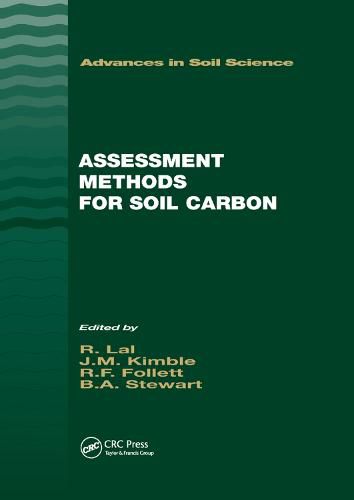Readings Newsletter
Become a Readings Member to make your shopping experience even easier.
Sign in or sign up for free!
You’re not far away from qualifying for FREE standard shipping within Australia
You’ve qualified for FREE standard shipping within Australia
The cart is loading…






Since carbon sequestration in soils reduces the amount of carbon available to the atmosphere, the Kyoto Protocols have heightened interest in soil carbon pools and their effect on carbon fluxes. Assessment Methods for Soil Carbon addresses many of the questions related to the measurement, monitoring, and verification of organic and inorganic carbon in soils. The major topics covered are: carbon pools; soil sampling and preparation, analytical techniques for soil carbon; soil erosion and sedimentation; remote sensing, GIS and modeling; procedures for scaling carbon data from point and local measurements to regional and even national scales; and economic and policy issues.
In Assessment Methods for Soil Carbon, leading researchers show that we now have the ability to measure, monitor, and verify changes to soil carbon. The book establishes the need for standardized methods that can be used by anyone, and helps us better understand the link between the pedosphere (soils) and the atmosphere. It also shows the importance of developing links between the economics of carbon sequestration and the amounts sequestered, and highlights the need for scientists and policy makers to interact to ensure that policies fit within the scope of present technologies.
$9.00 standard shipping within Australia
FREE standard shipping within Australia for orders over $100.00
Express & International shipping calculated at checkout
Since carbon sequestration in soils reduces the amount of carbon available to the atmosphere, the Kyoto Protocols have heightened interest in soil carbon pools and their effect on carbon fluxes. Assessment Methods for Soil Carbon addresses many of the questions related to the measurement, monitoring, and verification of organic and inorganic carbon in soils. The major topics covered are: carbon pools; soil sampling and preparation, analytical techniques for soil carbon; soil erosion and sedimentation; remote sensing, GIS and modeling; procedures for scaling carbon data from point and local measurements to regional and even national scales; and economic and policy issues.
In Assessment Methods for Soil Carbon, leading researchers show that we now have the ability to measure, monitor, and verify changes to soil carbon. The book establishes the need for standardized methods that can be used by anyone, and helps us better understand the link between the pedosphere (soils) and the atmosphere. It also shows the importance of developing links between the economics of carbon sequestration and the amounts sequestered, and highlights the need for scientists and policy makers to interact to ensure that policies fit within the scope of present technologies.